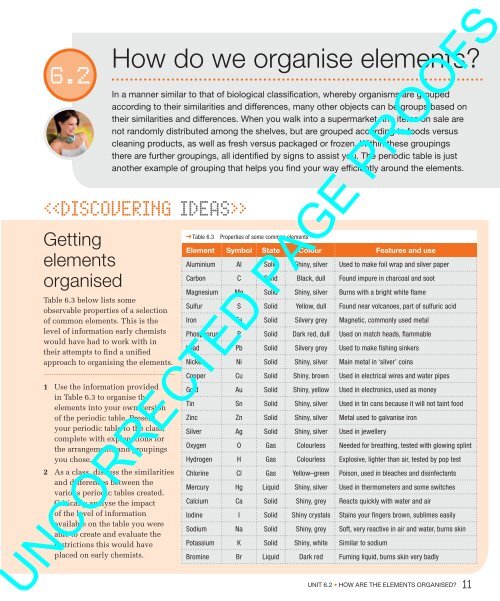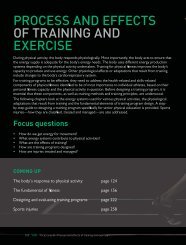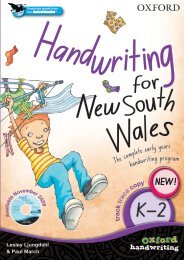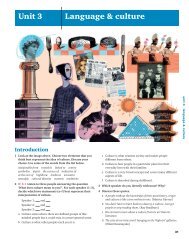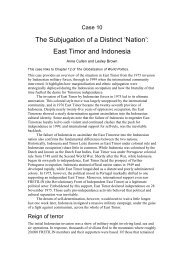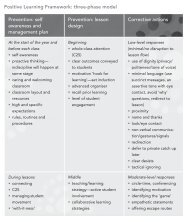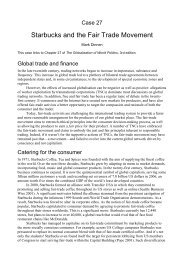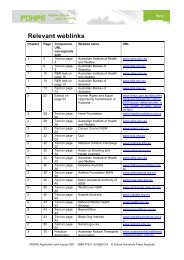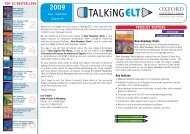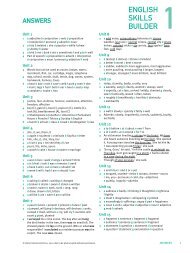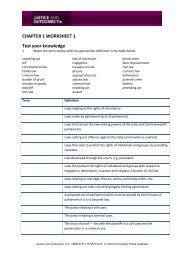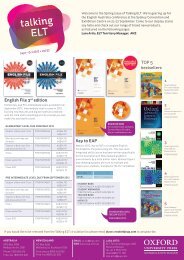2 Chapter 6 ⢠organising elements Organising elements
2 Chapter 6 ⢠organising elements Organising elements
2 Chapter 6 ⢠organising elements Organising elements
You also want an ePaper? Increase the reach of your titles
YUMPU automatically turns print PDFs into web optimized ePapers that Google loves.
6.2<br />
How do we organise <strong>elements</strong>?<br />
In a manner similar to that of biological classification, whereby organisms are grouped<br />
according to their similarities and differences, many other objects can be groups based on<br />
their similarities and differences. When you walk into a supermarket, the items on sale are<br />
not randomly distributed among the shelves, but are grouped according to foods versus<br />
cleaning products, as well as fresh versus packaged or frozen. Within these groupings<br />
there are further groupings, all identified by signs to assist you. The periodic table is just<br />
another example of grouping that helps you find your way efficiently around the <strong>elements</strong>.<br />
<br />
Getting<br />
<strong>elements</strong><br />
organised<br />
Table 6.3 below lists some<br />
observable properties of a selection<br />
of common <strong>elements</strong>. This is the<br />
level of information early chemists<br />
would have had to work with in<br />
their attempts to find a unified<br />
approach to <strong>organising</strong> the <strong>elements</strong>.<br />
1 Use the information provided<br />
in Table 6.3 to organise the<br />
<strong>elements</strong> into your own version<br />
of the periodic table. Present<br />
your periodic table to the class,<br />
complete with explanations for<br />
the arrangements and groupings<br />
you chose.<br />
2 As a class, discuss the similarities<br />
and differences between the<br />
various periodic tables created.<br />
Critically analyse the impact<br />
of the level of information<br />
available on the table you were<br />
able to create and evaluate the<br />
restrictions this would have<br />
placed on early chemists.<br />
Table 6.3<br />
Properties of some common <strong>elements</strong><br />
Element Symbol State Colour Features and use<br />
Aluminium Al Solid Shiny, silver Used to make foil wrap and silver paper<br />
Carbon C Solid Black, dull Found impure in charcoal and soot<br />
Magnesium Mg Solid Shiny, silver Burns with a bright white flame<br />
Sulfur S Solid Yellow, dull Found near volcanoes, part of sulfuric acid<br />
Iron Fe Solid Silvery grey Magnetic, commonly used metal<br />
Phosphorus P Solid Dark red, dull Used on match heads, flammable<br />
Lead Pb Solid Silvery grey Used to make fishing sinkers<br />
Nickel Ni Solid Shiny, silver Main metal in ‘silver’ coins<br />
Copper Cu Solid Shiny, brown Used in electrical wires and water pipes<br />
Gold Au Solid Shiny, yellow Used in electronics, used as money<br />
Tin Sn Solid Shiny, silver Used in tin cans because it will not taint food<br />
Zinc Zn Solid Shiny, silver Metal used to galvanise iron<br />
Silver Ag Solid Shiny, silver Used in jewellery<br />
Oxygen O Gas Colourless Needed for breathing, tested with glowing splint<br />
Hydrogen H Gas Colourless Explosive, lighter than air, tested by pop test<br />
Chlorine Cl Gas Yellow–green Poison, used in bleaches and disinfectants<br />
Mercury Hg Liquid Shiny, silver Used in thermometers and some switches<br />
Calcium Ca Solid Shiny, grey Reacts quickly with water and air<br />
Iodine I Solid Shiny crystals Stains your fingers brown, sublimes easily<br />
Sodium Na Solid Shiny, grey Soft, very reactive in air and water, burns skin<br />
Potassium K Solid Shiny, white Similar to sodium<br />
Bromine Br Liquid Dark red Fuming liquid, burns skin very badly<br />
UNCORRECTED PAGE PROOFS<br />
Unit 6.2 • How are the <strong>elements</strong> organised? 11<br />
CAS_SB10_TXT_06_1pp.indd 11<br />
11/11/11 4:58 PM


